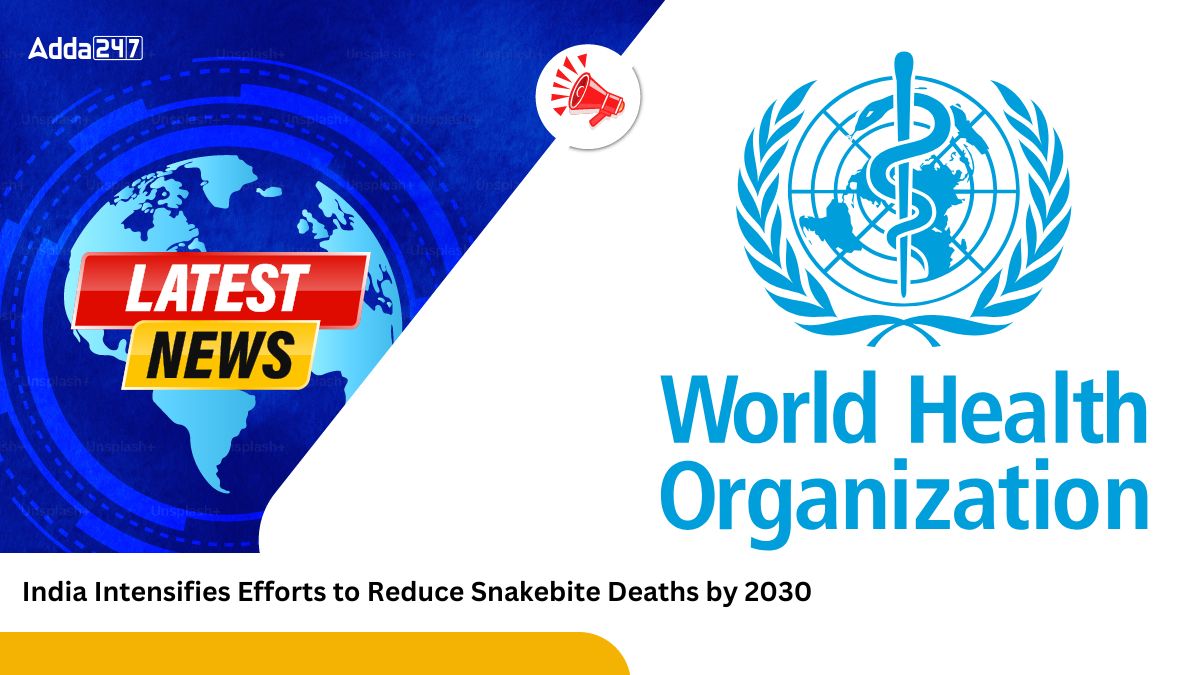India, which accounts for nearly 50% of global snakebite deaths, has declared snakebite a notifiable disease at the national level. This initiative aims to reduce the high mortality and morbidity rates associated with snakebites, particularly in rural and tribal areas, and aligns with the World Health Organization’s (WHO) target of halving global snakebite deaths and injuries by 2030. By mandating reporting of all snakebite cases and deaths, the move enables better surveillance, treatment, and prevention strategies, offering hope to marginalized communities disproportionately affected by this neglected public health issue.
Declaration and Implementation
- Notification Announcement: Declared by Union Health Ministry in a letter dated November 27, 2024, signed by Union Health Secretary Punya Salila Srivastava.
- Mandatory Reporting: All government and private healthcare facilities, including medical colleges, must report suspected or confirmed snakebite cases and deaths under relevant State Public Health Acts or other applicable legislation.
- WHO Target Alignment: Supports WHO’s goal of reducing global snakebite deaths and injuries by 50% by 2030.
Current State and Historical Context
- India’s Burden: The country witnesses over 50,000 snakebite deaths annually and is dubbed the “snakebite capital of the world.” Permanent disabilities among survivors are 3–4 times higher than deaths.
- Regional Steps: States like Karnataka and Tamil Nadu had already declared snakebites as notifiable diseases.
Benefits of Notification
- Improved Surveillance: Enables systematic tracking of snakebite cases, enhancing the accuracy of data.
- Better Resource Management: Facilitates efficient allocation of anti-venom, medical resources, and emergency care.
- Enhanced Response: Empowers healthcare systems at state and national levels to mitigate snakebite effects.
Public Health Initiatives and Research
ICMR’s Role
- Dahanu Model Success: Research initiated in 2014 reduced snakebite deaths by 90% in Palghar district, Maharashtra.
- National Scaling: Dahanu Model was expanded to Maharashtra and Odisha under the ICMR National Snakebite Project (INSP).
- Capacity Building: Training of medical officers and community engagement with traditional healers to improve envenoming management.
- IEC Material: Development of multilingual, culturally sensitive materials on snakebite prevention and management.
| Summary/Static | Details |
| Why in the news? | Snakebite declared notifiable in India, aligning with WHO’s 2030 target. |
| Significance | Addresses India’s contribution to 50% of global snakebite deaths; improves surveillance. |
| Mandatory Reporting | All healthcare facilities must report snakebite cases and deaths. |
| ICMR Contributions | Dahanu Model, IEC materials, training programs, and scaling to Maharashtra and Odisha. |
| Key States with Prior Action | Karnataka, Tamil Nadu. |
| Experts’ Views | Advocates for improved data, resource management, and focus on marginalized communities. |
| Outcomes Expected | Reduction in deaths, better preparedness, and enhanced healthcare response. |
| Challenges | Overcoming underreporting and addressing reliance on traditional treatments. |
| Next Steps | Strengthening national frameworks and integrating state efforts |



 Cabinet Nod to Atomic Energy Bill Unlock...
Cabinet Nod to Atomic Energy Bill Unlock...
 Insurance Amendment Bill 2025: Cabinet A...
Insurance Amendment Bill 2025: Cabinet A...
 Government to Rename MGNREGA, Hikes Job ...
Government to Rename MGNREGA, Hikes Job ...







